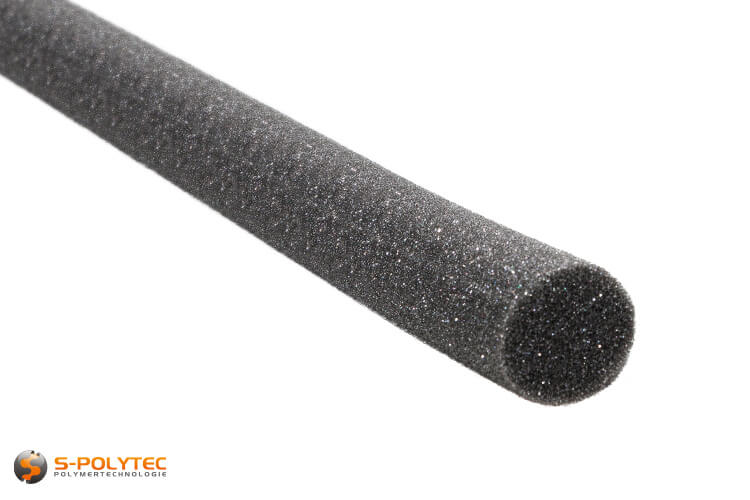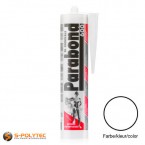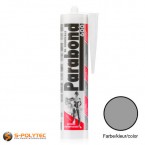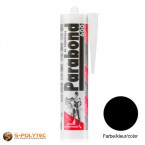
PU foam strip Ø 25mm (open cell)
Our PU foam strips as filler material for joints in interior and exterior areas guarantee an optimal two-flank adhesion. The foam strips in 25mm diameter are suitable for joints with a width of approx. 15mm to 20mm and a minimum depth of approx. 40mm.
For interior & exterior
✓ For medium joint widths
✓ Flexible & Extensible
✓ For all sealants
✓ CFC- & HCFC-free
The foam strips with 25mm diameter are available at attractive graduated prices in 1000mm lengths.
The item is in stock
Dispatch within 2-3 working days
- calculate the price
- from 10 Items €2.02/ pc. (Base Price €2.02/ m)
- from 30 Items €1.43/ pc. (Base Price €1.43/ m)
- from 50 Items €0.71/ pc. (Base Price €0.71/ m)
- from 100 Items €0.39/ pc. (Base Price €0.39/ m)
All prices include 19% VAT.
€2.50 / pc.
0,0110 kg / pc.
All prices include 19% VAT.
- Description
Joint foam strip Ø 25mm made of open-cell PU
For joint widths up to 20mm ✓ UV-resistant ✓ Flexible & stretchable ✓
Our foam strips made of open-cell polyurethane with a diameter of 25 are available as metre pieces at favourable prices. Depending on the order quantity, we grant generous quantity discounts, which are automatically taken into account by our online shop. Our grey foam strips can be used for both indoor and outdoor joints. Due to the soft, flexible material, it is very easy to insert into the joint and can also be laid around corners and radii without any problems. The 25mm foam strips are suitable for all joints with a joint width of 15mm - 20mm. For joints of this width, the recommended thickness of the applied sealant is approx. 10mm-12mm, which results in a minimum joint depth of approx. 40mm to be able to use the foam strip.
Our joint strip with a diameter of 25mm is ideal for limiting joint depths for joints of medium width. The use of a foam strip as backfill for joints with a depth of more than 40mm not only avoids that too much sealant is used and thus the ideal joint thickness cannot be achieved, but also has the effect that a three-sided adhesion of the applied sealant is avoided. This, as well as a too thick or too thin joint, reduces the elastic properties of the joint after complete vulcanisation of the sealant, which can sometimes have a significant effect on the service life of the joint.
-
Scope of Delivery:
- 1 x foam strip Ø 25mm open cell 1000mm length
TIP: With a sharp knife or scissors, the 25mm thick foam strip can be cut to size as desired.
Properties of our PU foam strip with Ø 25mm
Our PU foam strips are characterised by good chemical resistance to all materials used in construction and industry. Only the resistance to concentrated acids and alkalis, as well as to petrol, is to be classified as average, so that direct contact should be avoided. A further application restriction is joints that are permanently subject to high mechanical pressure, whether due to excess air pressure or water pressure from joints that are permanently below the water surface. The reason lies in the choice of material, because foamed polyurethane is soft and elastic and cannot permanently withstand such pressure. As a result, the joint sealant can tear in the worst case.
The flexible properties, on the other hand, have the advantage that the strips are very easy to process. Especially for joints with variable widths, the open-cell joint strips with 25mm diameter can be compressed to a much smaller width. Another advantage of the foamed material is its very good insulating properties, so that the foam strips are not only used to limit joints, but also contribute to optimised thermal insulation in connection joints between windows and doors and the masonry. As a UV- and weather-resistant sealing material, it can be used without hesitation for joints in outdoor areas. Our high-quality PU joint strips can also be used for interior joints without any problems, as they are physiologically neutral and free of CFCs and HCFCs.
Technical data of the PU foam strip in 25mm
- Material: Polyurethane
- Colour: Grey
- Diameter: 25mm
- Recommended joint width: 15mm-20mm
- Recommended joint depth: min. 40mm
- Density: 0.125g/cm3
- Shore hardness: 20-40
- Shrinkage hardness: min. 150 KPa according to DIN 53571
- Elongation at break: min. 150% according to DIN 53571
- Compression set: 25%-35% in accordance with DIN 53572
- Temperature resistance: -30°C - +60°C
- Ageing resistance: Excellent
- UV resistance: Sufficient
- Water resistance: Sufficient
- Chemical resistance: Sufficient
NOTE: The polyurethane round cords are only moderately resistant to petrol, concentrated acids and alkalis.
Processing of the 25mm foam PUR strip
Foam strips with a diameter of 25mm are used when joints with a high depth of more than 40mm are to be sealed. On the one hand, the foam strip acts as a limit for the thickness of the joint, which for wall joints should be about half as thick as the width of the joint (for load-bearing floor joints, the ideal thickness is 60%-100%, depending on the joint width). In addition, a foam strip as backfill ensures that a two-flank adhesion is guaranteed, which is enormously important for the elasticity of an expansion joint. The soft, open-cell foam material is inserted into the joint by hand or with a joint strip roller before sealing. In order to achieve a secure hold without the foam strip slipping backwards when applying the sealant, the joint width should be between 15mm and 20mm.
Our flexible foam strips made of foamed polyurethane have a high extensibility of about 150%. Nevertheless, when inserting them into the joint, care should be taken not to stretch the joint strip too much. These will contract again over time, so that in the worst case the backfill will no longer be without gaps. This may result in the joint no longer having a sufficient boundary. Furthermore, such gaps can also have an impact on thermal insulation, especially if the joints are expansion joints or wall connection joints in the exterior.
-
Application examples:
- Foam strips are effective in limiting the joint depth for the perfect thickness of the joint
- Foam strips ensure the two-flank adhesion mandatory for permanently elastic joints
- PU foam strips can be used with all sealants such as silicone, MS polymer or acrylic
- The 25mm diameter PU foam strips provide good additional thermal insulation of the joints
- The 25mm strips can be used as joint filler for medium width joints from 15mm-25mm
For sealing joints with a silicone sealant or similar, the processing temperature should be between +5°C and +40°C. The foam strips should also be applied in the same temperature range. It is also important to ensure that the foam strips are inserted into the joint in a dry state and do not get wet during this process, as the absorbed moisture cannot escape quickly enough after the joint has been sealed. Once the jointing is complete and cured, the temperature resistance of our foam strips is -30°C to +60°C, which is more than sufficient for almost all construction joints for sealing buildings.
NOTE: The storage place of the foam strips before processing should always be dry and at best have a storage temperature of about +5°C to +25°C.
- Additional Information
Additional Information
Product-ID SP-ODR-25 Delivery Time Dispatch within 2-3 working days EAN/GTIN 4260604223809 Weight 0.0110 Diameter 25,00 mm Standart Length 1000 mm Plastic Polyurethane Color Grey - Reviews




